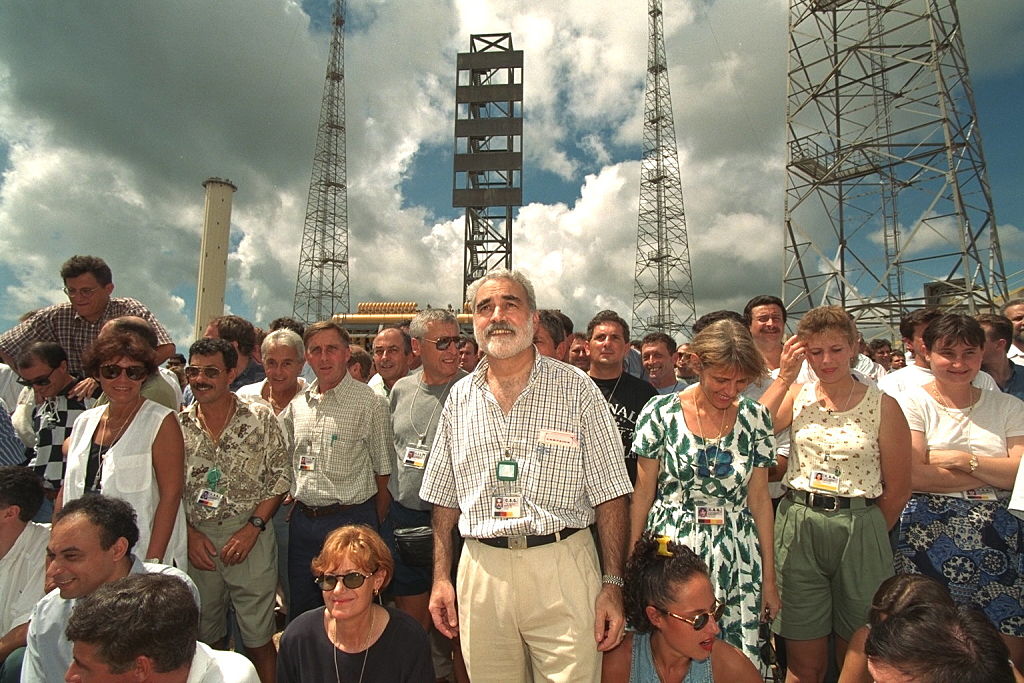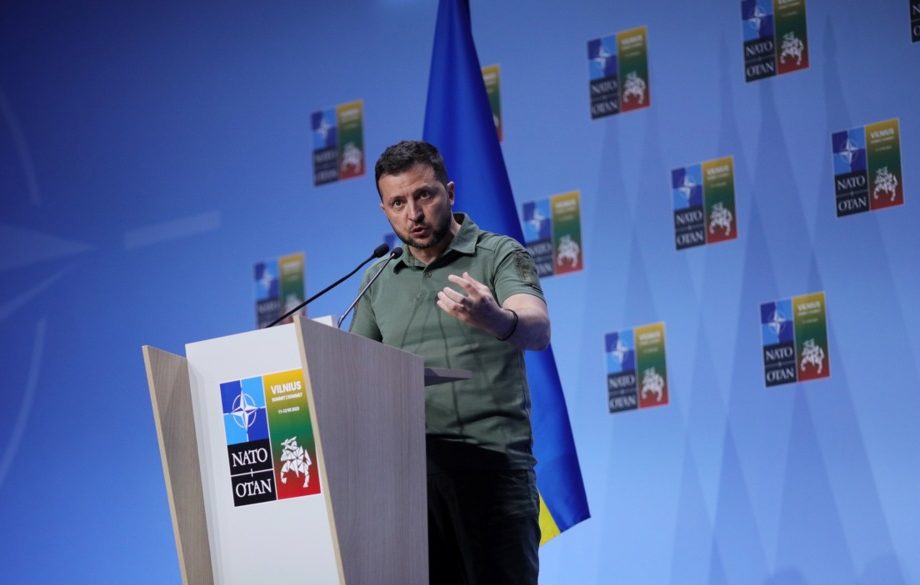The Ukraine war hit its 520th day of bloodshed and mayhem on July 28 as the EU Parliament and most other EU institutions broke up for their summer recess.
It’s hard to know how much the conflict will impinge on the vacations of those working in the European institutions. I doubt it will be much for the majority of them.
That said, I recently experienced how the Ukraine war can unexpectedly intrude and remind you of what is going on in a more direct way.
I had just landed at Berlin Brandenburg Airport on a Friday afternoon and was exiting the terminal, my head full of pommes frites mit ketchup and mayo with a stein or two of Schultheiss pilsner beer, and feelings of bonhomie about the forthcoming weekend savouring Berlin’s strident mix of edgy alternativeness alongside its more traditional Germanic side.
Suddenly four men in a mixture of Ukrainian military clothing and sports kit hobbled across my path, displaying various combinations of prosthetic limbs and crutches.
You got to be kidding me, guys, I thought. Talk about putting a dampener on the weekend good vibes. During my tour in Afghanistan, limbs were blown off daily by the Taliban’s very effective Improvised Explosive Device campaign. It’s not a great time I care to recall.
Once I’d got over the four Ukrainian soldiers’ intrusion into my merry getaway, I managed a quick chat with them, thanks to one of them speaking halting English. It turned out they were getting a connecting flight on to Ukraine having just returned from a few months in the US where they had undergone treatment and rehabilitation following their injuries.
The numbers of total casualties for both Russian and Ukrainian troops remains very much shrouded by the infamous Fog of War, resulting in “a ton of wildly disparate estimates”, notes Responsible Statecraft, the online magazine of the Quincy Institute for Responsible Statecraft, a non-interventionist think tank located in Washington, D.C.
Further confusion is caused by casualty figures cited usually combining deaths and injuries without indicating the ratio — injuries tend to be far larger — while injuries cover a spectrum from a soon recovered relatively minor one, to injuries that impact the rest of your life, as experienced by those soldiers I saw at Berlin’s airport.
In April, purportedly leaked US intelligence reports suggested as many as 345,000 Russian and Ukrainian soldiers have been killed or injured since Russia’s invasion in February 2022. But Reuters noted it had “not been able to independently verify the documents”. That Fog of War again.
The obfuscation becomes less dense at times. During the “grinding battle” for the city of Bakhmut, the attrition rate on both sides was immense, notes Responsible Statecraft. Ukrainian forces reportedly were “losing a three-digit number” of troops every day, while soldiers on both sides felt they were “being sent barely trained and under-resourced to their deaths”.
These sorts of details are rarely absorbed by most us. Partly because amid the rush of the day, who has the time or inclination to dive into the foul weeds of this war. But also because most mainstream media — cognisant of its readers’ sensitivities, alongside editorial agendas — have continually offered “skewed press coverage” and “media opacity”, in Responsible Statecraft’s words.

It all feels depressingly familiar, recalling both the wars in Iraq and Afghanistan, when devastating consequences for those directly involved continued year after year as everyone else back in the West went on with their lives generally unaffected. I say unaffected, though at the same time, we’ll never be able to quantify or qualify the fallout back home of the colossal resources, money and expertise devoted to those conflicts in lieu of being utilised domestically. Suffice to say, among other things, our economies don’t seem to have ever got over it.
Clearly, many Europeans are not complacent about the war: witness all those Ukrainian flags on balconies across Europe — though, also, what actual effect does that gesture achieve — and all those families who have taken Ukrainian refugees into their homes for months, if not the duration of the war. The latter is a clear practical measure that has an enormously beneficial impact.
EU institutions, however, risk repeating what occurred in Afghanistan and pursuing one single practical measure: simply focusing on supplying arms and fiscal support as a solution to the Ukraine war, as its member states are increasingly mired in their own domestic crises.
Central Europe’s arms manufacturers are scrambling for new ways to cope with the biggest boom since the end of the Cold War. https://t.co/6BwRh9uAq7
— Brussels Signal (@brusselssignal) August 2, 2023
“France is currently being torn apart by civil disorder, while Germany’s governing coalition is losing support by the day as the far-right AfD climbs higher and higher in the polls thanks in part to its vocal opposition to the Scholz government’s pro-war policies, which are tanking the once seemingly invincible German economy,” Responsible Statecraft notes.
Industry executives have warned that Germany has entered a phase of “de-growth” dominated by nosediving industrial production. https://t.co/Lagf32YRDp
— Brussels Signal (@brusselssignal) August 7, 2023
During a May visit to Hungary, the Pope called out the lack of “creative energy” over finding peace in Ukraine. While there have been some dissenting voices taking the EU leadership to task for their Ukraine war strategy — and who have suffered for going against the consensus — the EU majority has remained hawkish and thrown their weight behind arming Ukraine as the only course.
In Afghanistan, a similar approach of no negotiation was taken with the Taliban. Perhaps it never would have made a difference. We’ll never know. Though we do know how avoiding diplomacy didn’t work, and all the years of Western blood and treasure spent in Afghanistan culminated in the West’s ignominious withdrawal in August 2021.
Czech MEP Tomáš Zdechovský recently told the Brussels Signal in no uncertain terms that the only way to achieve peace in Ukraine is by defeating Russia, and that “peace between Ukraine and Russia will never be, if Russia has the power to still make the war stronger and to make offensive attacks”.
WATCH: Ceding Ukrainian territory to Russia is not a viable peace agreement and will reward Russia for its military aggression, warns Czech MEP @TomasZdechovsky in an interview with our Head of News Justin Stares. pic.twitter.com/S8omHFC0s4
— Brussels Signal (@brusselssignal) July 26, 2023
But the lack of a defined “endgame” in Ukraine beyond one option that appears increasingly hard to achieve — as it did in Afghanistan — is an increasing dilemma for the EU with each day that passes.
Beyond the carnage of civilian deaths in Ukraine, there’s untold grim fallouts for its society (and for Russia’s obviously) such as the booming “baby farms” capitalising off desperate surrogate Ukrainian mothers, as detailed in a particularly disturbing article by The Grayzone, an independent news website dedicated to original investigative journalism.
September 11 is the next time following the summer recess that the EU Parliament gathers for plenary, when MEPs debate and vote on proposed EU legislation.
Now an ominous date for many in the West due to the 2001 attacks in New York, followed by the misadventures of Iraq and Afghanistan, this Sept. 11 will mark the 565th day of the Ukraine war.






Prepare for a long war: With no end in sight the Ukraine war is a generational struggle